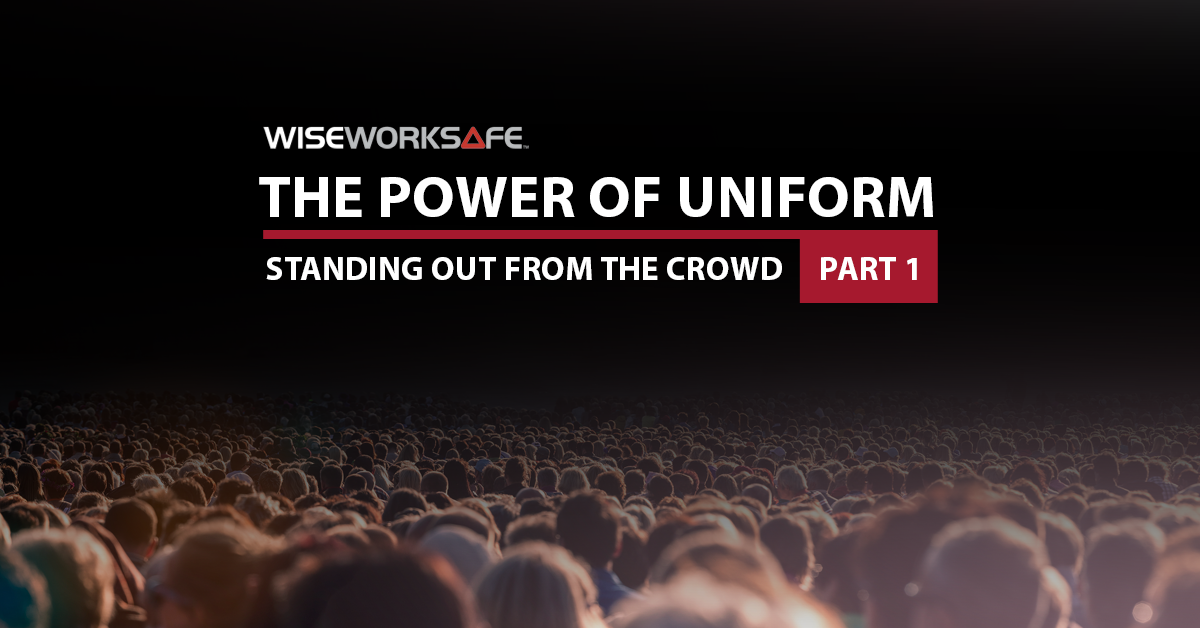
The Power of Uniform Part 1 of 4: Standing Out From the Crowd
Uniforms are at the heart of some of Britain’s most iconic brands. Take Royal Mail, Virgin Atlantic and Sainsbury’s as prime examples. It’s likely that one of the first things you visualise when you think of those companies is their uniformed staff.
Corporate clothing plays several important roles, all of which should be considered when creating the perfect uniform. In The Power of Uniform series, we’ll explore how you can select a uniform that has a true purpose within your organisation.
First, we’ll look at how you can use uniform to make your people and your brand stand out from the crowd. There are many ways you can make a strong visual impact, not just through the use of colour, but also by paying attention to other subtler aspects.
It All Begins with Your Brand Purpose
Similarly to your promotional literature, signage or digital marketing channels, the uniform your people adorn must be aligned with the branding of your company and its overriding purpose.
Brand purpose can be thought of as the DNA of your organisation. It’s the true reason your brand exists, in terms of what it offers the world, and the meaningful impact it has on consumers.
Uniform is one of the most powerful ways to translate your purpose and values into a living and breathing representation of your brand.
Let’s take a look at what part each element of the selection process plays, and how the combination of these can convey your unique message, and make your team truly stand out.
Garments
Factors influencing your choice of garments will naturally include comfort, style, fit, quality and functionality; such aspects are all of personal importance to the wearer.
But remember to also consider how the garments will complement your brand.
Think wearer. Think brand. Both areas are equally significant.
Each garment makes up part of a ‘canvas’ upon which you can showcase your brand. This doesn’t mean every item of clothing has to be embellished, but the combination of garments you choose, coupled with your unique branding, has the potential to create an enormous impact.

Colours
The use of colours is the most fundamental way to create your desired look.
Standing out from the crowd doesn’t have to be achieved by wearing the brightest or boldest colours in the room. Choose colours strategically, and don’t underestimate the visual impact of even a small group of people dressed the same.
When selecting colours, refer to our infographic on what colours reveal about your brand. This considers the subliminal and emotive impact colours have on consumers, which can help ensure you stand out for the right reasons.
Some of the messages conveyed by colours include:
- Red: boldness and excitement
- Blue: trustworthiness and intelligence
- Green: nature and health
- Yellow: creativity and happiness
- Purple: heritage and luxury
At every customer touchpoint, uniform included, colour can alter the response that’s received. It can also have a significant impact on brand recognition, which we touch on in the second part of this series.
Logos and Brand Elements
The application of branding onto your uniform provides huge scope for creativity. Think beyond the placement of a single logo in a common position, and consider the flexibility offered by your brand and the garments to produce the greatest impact.
Your logo is the obvious starting point. Does your logo have variations, such as a landscape, portrait and square version? Maybe your logo sometimes includes your company or brand name, and other times just an icon. Do you use more than one Pantone or colourway, depending on the background colour or for other reasons?
Then think about other elements of your brand, such as slogans, graphics, mascots or sub-brands. Consider contact details or calls-to-action, such as a website, telephone number or hashtag.
Once you’ve thought through all the decoration options, consider the positions these could be used on different garments. Conventional locations, such as left chest or centre back, are often used – and rightly so – but you don’t have to be limited by these. Create uniqueness and style by trying your branding in other positions, such as down the sleeve or trouser leg, on one shoulder blade, or across the back of the collar. The options are almost endless, so work through the possibilities with your team and your supplier.
Don’t try and include everything on your uniform, as you don’t want it to become overcrowded. Instead, pick the elements which work best with your selection of clothing, based on the image you want to portray.
We’ll develop this area further in the third part of this series, by exploring how you can use garment branding to drive customer engagement.
Typeface
Finally, if your branding includes text, don’t overlook the typeface.
Your organisation may already have one or more corporate fonts which are used in other areas of marketing. Many brands have a primary and secondary font which are used in different contexts, such as headings, subheadings and standard text. Be sure to meet your company’s brand guidelines to maintain consistency.
If you need to select a new typeface, or your marketing department doesn’t stipulate a specific font, think carefully about your choice. Like a logo, a typeface must be flexible and applicable on various mediums, and it can make a big difference to how your brand stands out and the message it gives.
Vogue’s use of ‘Didot’ and ‘Bodoni’ typefaces, which originate from the 18th century, is impactful and bold whilst maintaining an air of classiness. Lego’s bespoke font, on the other hand, screams playfulness and engages a younger audience.
Consult your marketing department or agency when making a decision, or find advice online, such as Tailor Brand’s article on how to choose the right font for your brand.
What Next?
In the remainder of this series, we look at some of the goals that can be achieved through a strategically created uniform:
- Part 2: Improve brand awareness and perception
- Part 3: Generate customer engagement
- Part 4: Strengthen employee commitment and promote teamwork
We discuss how you can build brand awareness, including recognition and recall, and influence the way consumers perceive your organisation.
Then we explore your uniform’s ability to engage your customers through ways you may not have previously considered.
Finally, you’ll learn how to engage and inspire your team, strengthen their commitment to your organisation, and establish great teams through uniform.
To ensure you don’t miss our future articles, follow us on LinkedIn. If you’re ready to look at putting this guidance into practice, speak to our experienced team on 020 8381 1811 or email us. With dedicated account managers and in-house garment embellishment, we can help you through the entire design, selection and supply process. What’s more, through your own personalised online portal, managing and ordering your chosen uniform has never been simpler.

 VIEW BASKET
VIEW BASKET


